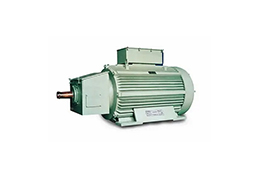Duties and Responsibilities of Crane Duty Slip Ring Motors
Specially engineered for crane and hoist applications, crane duty motors are designed to provide reliable performance in demanding environments. They are also well-suited for use in material handling equipment and various types of cranes. These motors can also be used as auxiliary motors in rolling mills or wherever intermittent duty drives are required.
Crane duty motors are rated for duty type operations and are capable of developing high starting torque with low starting current. They are designed to handle frequent starts, stops, and reversals, making them ideal for applications that require rapid acceleration. The high pull-out torque/rotor inertia ratio of these motors further enhances their performance.

These motors are commonly used in various applications including long travel drives, cross travel drives, main hoists, and auxiliary hoists in cranes and hoists. They are also used in material handling equipment such as conveyors, as well as in lifts and rolling mills. With their robust construction and specialized features, crane duty motors are built to withstand the rigors of heavy-duty operations in industrial settings.
Squirrel cage crane duty motors are typically supplied with horizontal foot mounting. However, motors with foot, flange, or face mounting, in either vertical or horizontal orientation, can be provided upon request. Slip ring motors are typically offered with foot mounting, but flange mounting can be supplied upon specific request.
Crane duty motors are designed to be suitable for 3-phase power supply and can be wound for single voltages ranging from 220 to 650 volts, as well as frequencies of 50 Hz or 60 Hz. The rotor voltage is set for stator supply of 415 V and 50 Hz. For other supply conditions, the rotor voltage (Rv) needs to be confirmed with CG (manufacturer).
The motors are rated for an ambient temperature of 45°C. If operating at temperatures other than 45°C, a deration factor must be applied as indicated below.
For your specific requirements pls contact us now!